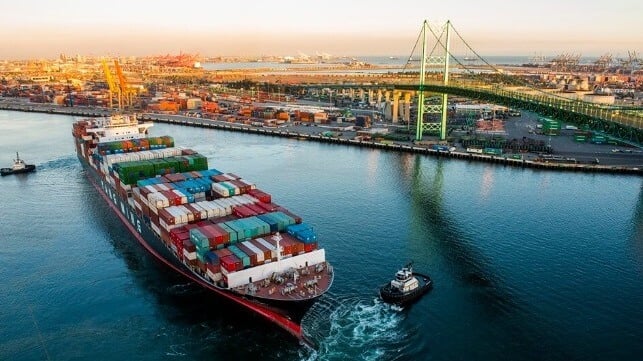EPA Approves California's Strict Harbor Craft Emissions Rule
California will be the first jurisdiction in the U.S. to require diesel particulate filters on commercial vessels

With just days to go before the end of the Biden administration, the EPA has approved a controversial California rule requiring diesel particulate filters aboard ship-assist tugs and other small harbor craft.
Because of the unique smog issues of the Los Angeles airshed, the state of California has a carve-out in federal law that allows it to create its own motor-vehicle emissions regulations. The California Air Resources Board (CARB) writes statewide exhaust limits that are often more stringent than federal standards - like its recently-revised Commercial Harbor Craft Rule.
The revised rule requires tug and harbor craft operators to use an EPA Tier IV engine, the cleanest on the market. In addition, unlike any other regulator, CARB requires local harbor tugs to have a "level 3 Verified Diesel Emission Control Strategy (VDECS)" - any system that reduces particulate emissions by at least 85 percent. Options include switching to a zero-emissions newbuild, like Crowley's groundbreaking eWolf, or installing a diesel particulate filter (DPF) - an emissions control system that is rarely used in commercial maritime applications. (Marine DPFs are primarily sold for the luxury-yacht market, where they are known as "soot filters" and used to control exhaust stains on white hulls.)
CARB's justification for the DPF rule is to reduce the cumulative public health burden of diesel particulate matter, a suspected carcinogen and contributor to athsma. The agency estimates that statistically, the DPF rule will save about 500' lives, many in the port-adjacent communities most affected by harbor air pollution.
Acting EPA Administrator Jane Nishida approved the DPF rule (and other elements of CARB's revision) in a Federal Register notice this week.
"CARB has demonstrated the existence of compelling and extraordinary conditions justifying the need for such state standards," Nishida wrote. "The administrative record, including information presented to me by parties opposing California’s authorization request, did not demonstrate that California does not need such state standards."
Tug operators and Coast Guard regulators have expressed concern that DPFs could create a new fire hazard in the tight confines of a tug engine room. These filter devices need a cleaning cycle to periodically burn off accumulated soot. When activated, the cycle runs the filter's internal temperature up to more than 900 degrees F. This means that DPF exhaust designs get much hotter than non-DPF designs, raising fire risk concerns.
Tug operators warned that the retrofits could create a safety hazard or - if not possible to perform - could take tugs out of service, hampering California's thriving port sector. Last year, they campaigned against the requirement in a direct appeal to California's legislature. As a result of this effort, the California House and Assembly passed a bill to modify CARB's DPF rule; the text provided for an emergency-bypass safety system for the DPF and an extended compliance timeline. However, the bill was vetoed by Gov. Gavin Newsom in September.
Environmental justice activists have cheered CARB's rule as another step towards clean air for port communities.
"EPA's decision to approve the bulk of California’s commercial harbor craft standard will give urgently needed relief to portside communities who breathe in dirty diesel pollution from tugboats, ferries, and other harbor vessels," said Regina Hsu, senior attorney on Earthjustice's Right To Zero campaign. "This standard will gradually shift these boats to zero-emissions over the coming years. Now, other states with ports should take a keen look at this life-saving rule and consider adopting it to protect their own residents.”
